Fall Hydrangea Care
Fall Hydrangea Care
Many of our customers are asking how to care for their hydrangeas this fall, especially after this dry, hot summer. Some plants are wilted and look awful right now, while others still look good. Here are the answers to the 7 most common questions we hear about Hydrangea plants in the fall.
1. Some of my Hydrangea flowers have turned green. Is this okay?
Smooth hydrangeas (Hydrangea arborescens varieties) such as Annabelle and Incrediball have flowers that start out greenish, turn white when the blooms mature, and then turn green again in the fall. This is normal for these varieties. You can leave them on the shrub or cut them for bouquets in the house. When they are green, they can even be dried along with the blue mopheads.
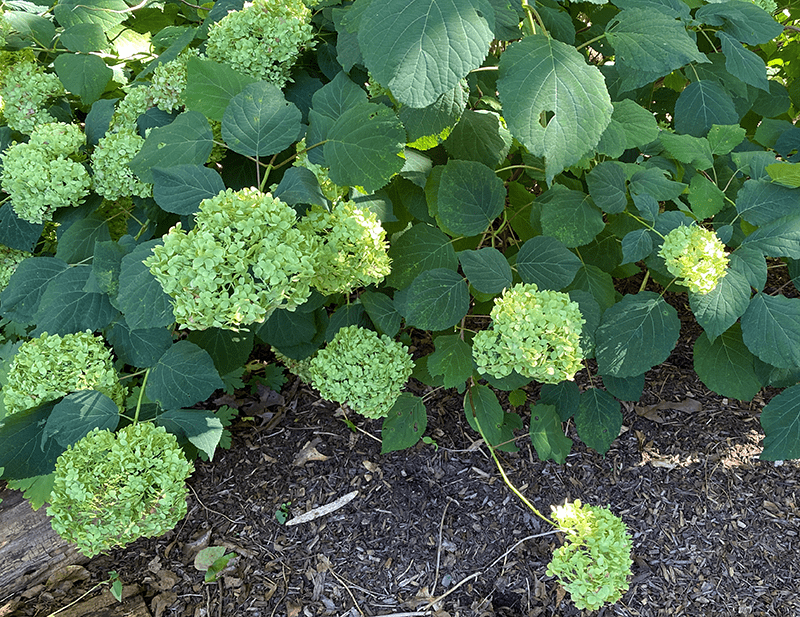
2. What can I do now to help my Hydrangeas for next year?
One of the best things you can do for your Hydrangea shrubs in the fall is to spread compost around the stems and out beyond the drip-line. This adds organic matter to the soil from the top down, which is how Nature feeds plants. That compost can go right over the remains of this year’s mulch (also organic matter and good for the soil) and then covered with another inch of mulch next spring.

3. Is it possible to keep blue Hydrangea flowers from fading in fall?
The flowers that these plants formed last year – the ones that opened up in June – will naturally fade as the summer goes on. Hydrangea people call this “the antique phase” of the blooms, and many people enjoy these colors as much as the fresh, clear shades of early summer. Those shrubs that also produce flowers on new growth will often have both on the plant at this time of year. Although it’s impossible to prevent flowers from going into this antique look, when mopheads are planted in afternoon shade, the flowers are less prone to browning and will look good as they transform to lavender, sea-green and purple.
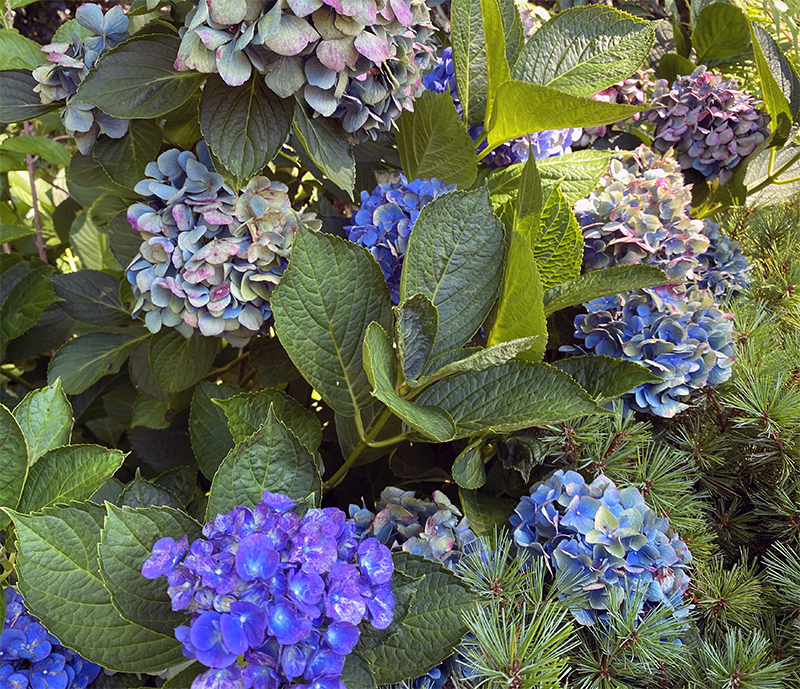
4. My hydrangeas are so sad and droopy. Should I cut them to just above the ground now?
No matter what type of Hydrangea shrub you’ve got, it’s probably not wise to cut them so severely now. If they are the blue hydrangeas, they already have the germ of their flowers for next year. These are formed in late-summer where the current leaves attach to the stem. If those buds are still viable, they will produce your flowers next summer. Yes, it’s possible that those buds are toasted from the heat of the summer, but you won’t know that until next year in May. The percentage play for all types of Hydrangea is to leave them now, clean up any fallen leaves later in the fall, and see what happens in May of next year.
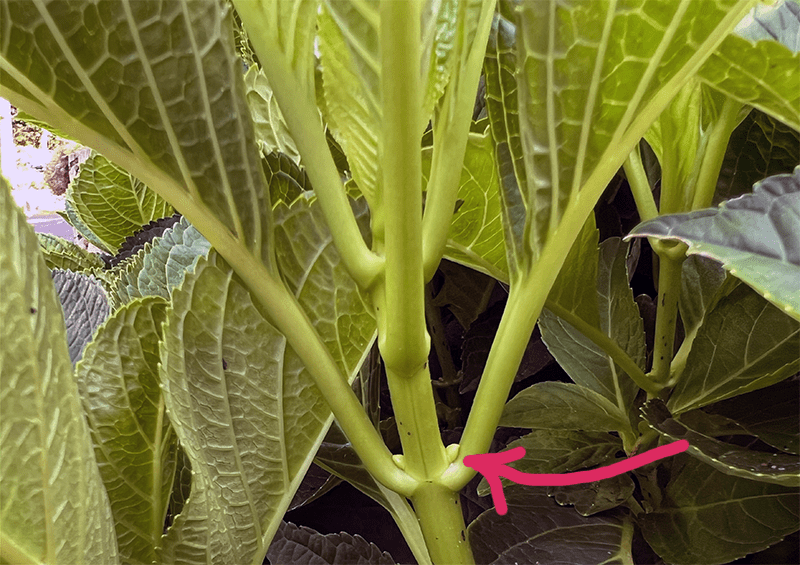
5. My white panicle flowers did well but the plant is kind of uneven looking. When can I prune it?
Panicle hydrangeas (Hydrangea paniculata varieties) form their flowers on new growth so if you cut them back now they will still bloom next summer. Some people lightly prune these in the fall, but it’s more common to prune panicle Hydrangea shrubs in the spring. You can make note of which plants will need shaping and note that on your calendar for next April or May. (C.L. Fornari’s virtual seminar about pruning is coming up on September 25th at 4 PM. Register here.)
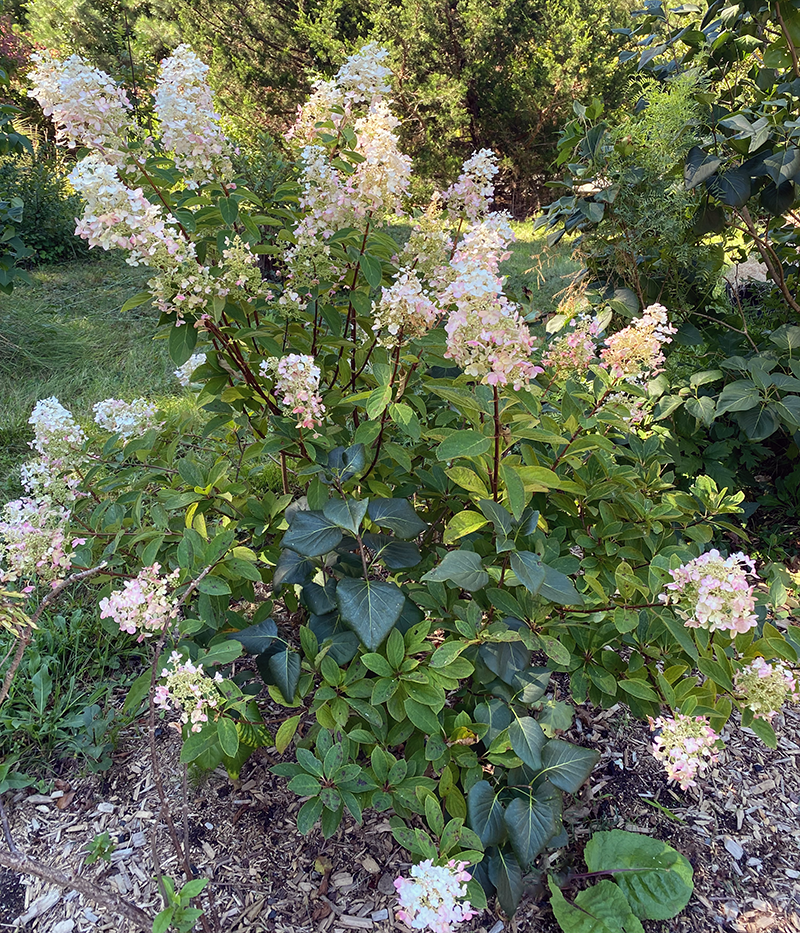
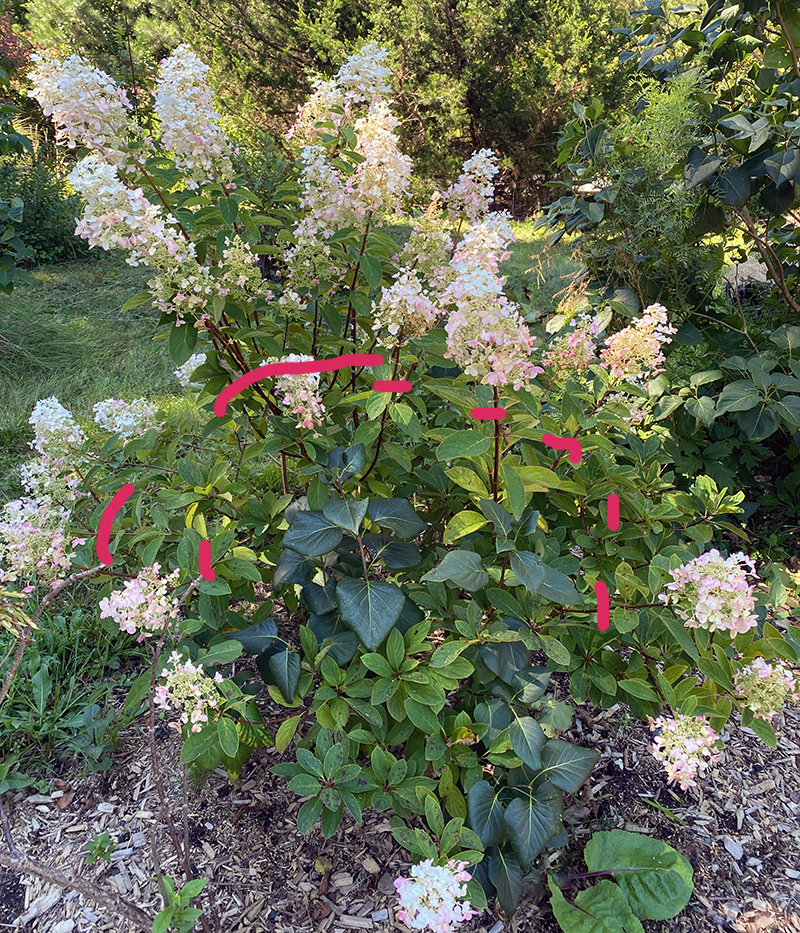
6. The leaves and old flowers on my Hydrangea look awful. Should I clip them all off?
Cutting the leaves and flowers off is up to you, but it might be time consuming, and they will fall off naturally later in October. If you think that the leaves were damaged by chilli thrips, do clean up the leaves that fall around the plant because this pest over-winters in the leaf litter under these plants. See more about chilli thrips here.
If the brown flowers annoy you, clip them off by cutting right below the bloom. Leave the stem uncut since that’s where the germ of next year’s blossoms have formed.
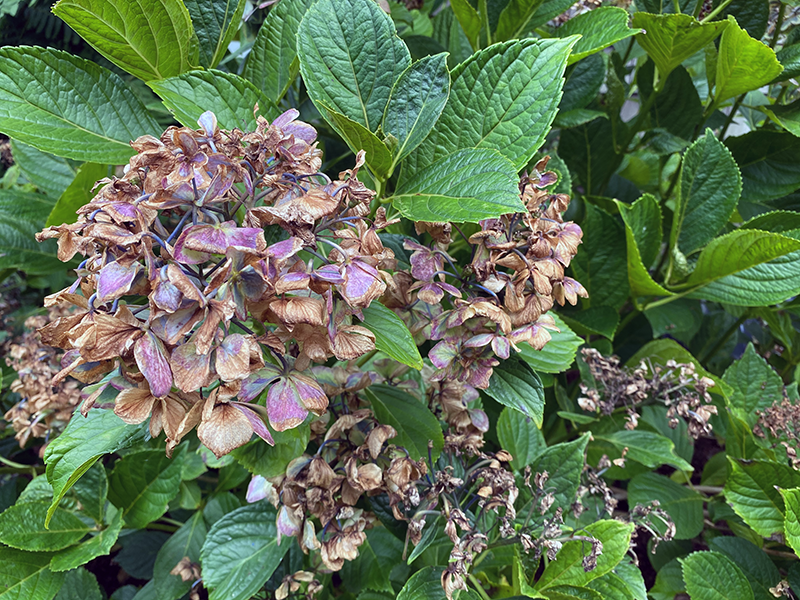
7. I have a new flower stem coming up from my panicle hydrangea. Is this normal?
Sometimes panicle hydrangeas form some new flowers later in the summer, especially if some of the stems were pruned back a bit later in the spring. But look at this new stem closely to see where it originates…follow it back to where it either joins the mother plant, or comes out of the ground. If it’s growing from the soil, not from the main shrub, it’s likely to be a self-seeded plant. If that’s the case, it might be different in size or flower appearance from the shrub it’s growing next to. It’s smart to remove such self-seeded hydrangeas – if you want to grow them on to see what they do, transplant to another place in full to part sun. Assume that the plant will grow large, and site it accordingly.
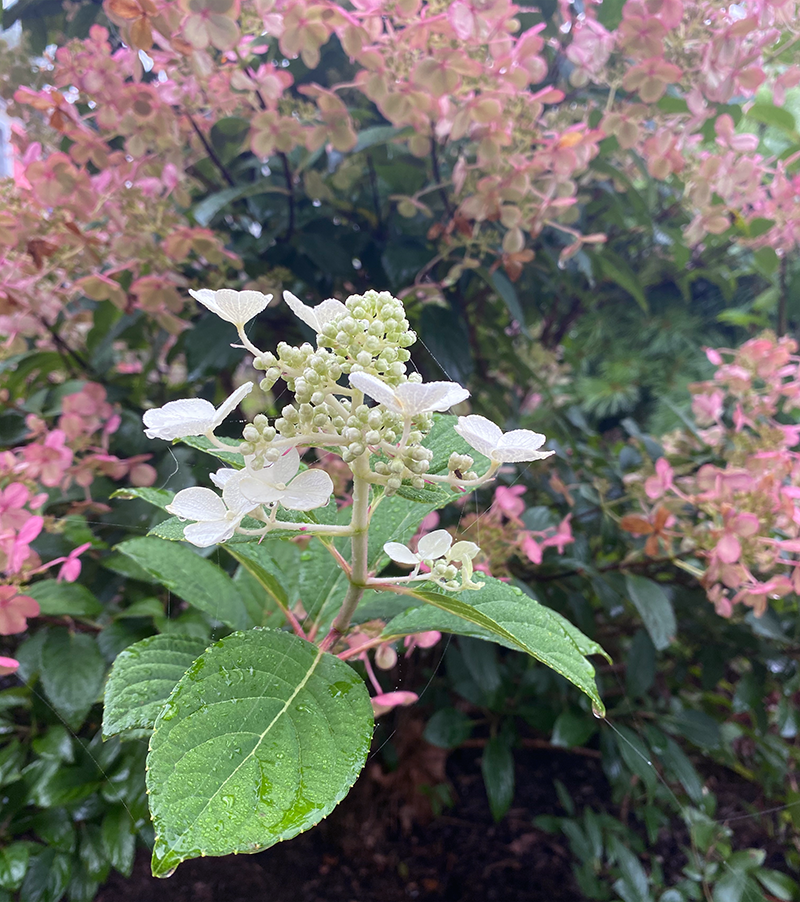
2 Comments
Leave a Comment
Subscribe To Our Newsletter
Sign up for our weekly email about sales and events.

Thanks for the information. Could you please tell me what causes black spots on the leaves? And how to avoid it. Also why does my bush bloom on the backside (closer to the house)?
Gail – the black spots are leaf spot fungus. Hydrangeas are prone to leaf spot, some varieties more than others. On Cape Cod it often starts in our cool, damp weather that’s typical in May and even June. It can be made worse by irrigation systems (including lawn irrigation) that hit the plants too frequently. Next year if you want you can spray with an organic fungicide early in the season, and be sure irrigation isn’t hitting the leaves. The good news is that this is a cosmetic problem only, and doesn’t kill the plants.